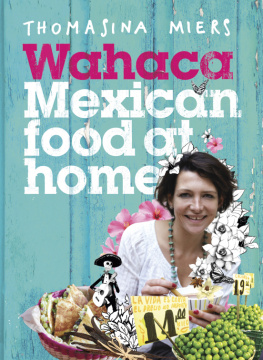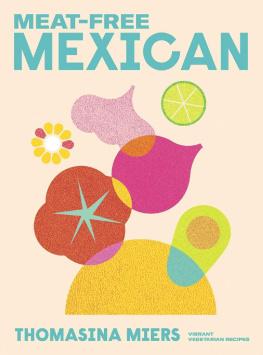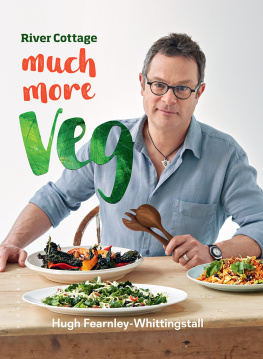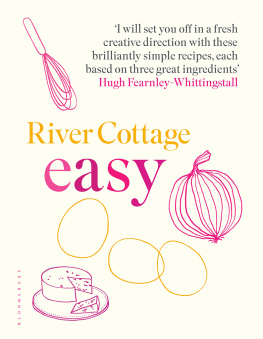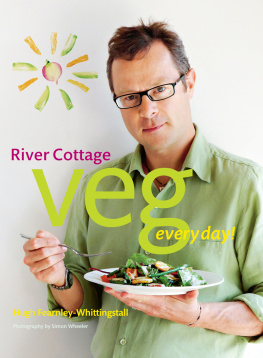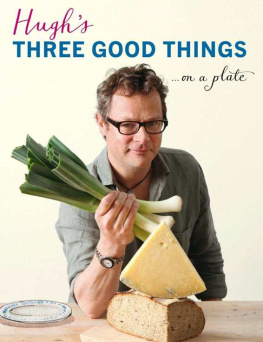Thomasina Miers - Little Book of Soup (Text Only)
Here you can read online Thomasina Miers - Little Book of Soup (Text Only) full text of the book (entire story) in english for free. Download pdf and epub, get meaning, cover and reviews about this ebook. year: 2016, publisher: HarperCollins, genre: Home and family. Description of the work, (preface) as well as reviews are available. Best literature library LitArk.com created for fans of good reading and offers a wide selection of genres:
Romance novel
Science fiction
Adventure
Detective
Science
History
Home and family
Prose
Art
Politics
Computer
Non-fiction
Religion
Business
Children
Humor
Choose a favorite category and find really read worthwhile books. Enjoy immersion in the world of imagination, feel the emotions of the characters or learn something new for yourself, make an fascinating discovery.
- Book:Little Book of Soup (Text Only)
- Author:
- Publisher:HarperCollins
- Genre:
- Year:2016
- Rating:4 / 5
- Favourites:Add to favourites
- Your mark:
- 80
- 1
- 2
- 3
- 4
- 5
Little Book of Soup (Text Only): summary, description and annotation
We offer to read an annotation, description, summary or preface (depends on what the author of the book "Little Book of Soup (Text Only)" wrote himself). If you haven't found the necessary information about the book — write in the comments, we will try to find it.
Little Book of Soup (Text Only) — read online for free the complete book (whole text) full work
Below is the text of the book, divided by pages. System saving the place of the last page read, allows you to conveniently read the book "Little Book of Soup (Text Only)" online for free, without having to search again every time where you left off. Put a bookmark, and you can go to the page where you finished reading at any time.
Font size:
Interval:
Bookmark:

Our book Soup Kitchen was the result of a years work and an incredible journey. The motivation behind the book of soups was to raise money for the varied and wonderful work of homeless charities across the UK through the talents of a fantastic collection of chefs. We were somewhat cautious about taking it on but right from the start we both felt a tremendous excitement about making it happen. When we got on the phone to talk to chefs about soup, the results amazed even optimists like us. Within a week we had 12 recipes, by the next we had 40. Friends rallied round to share pearls of wisdom and outstanding professionals including a photographer, a graphic designer, law firm, literary agent, accountancy firm and website design company offered to work with us for free.
Soup Kitchen has sold very well, raising invaluable funds in the process, and is still going strong. We thought it would be fun to offer a second helping, however, in the form of this bite-sized selection of soups. As before, royalties benefit homeless charities including the Salvation Army and Centrepoint. We hope youll enjoy cooking from it as much as weve enjoyed creating it.
Annabel and Tommi
What is soup? Clearly it takes many forms. From a snack or a starter to a full blown supper, from a delicate but intense transparent infusion, to something so thick and robust you might want to swap your spoon for a knife and fork. Really, there is no more versatile dish on the planet. This explains soups unique ability to cut across all the cultural boundaries of food, and delight the palates of men, women and children wherever they gather to share food.
Soup not only thrills the taste buds of diners the world over, it also stretches the imagination, and mediates the feelings, of all who love to cook. Sometimes its a blend of subtle and extravagant ingredients fine tuned by a maverick genius to whet the appetite of a millionaire for another seven courses to come. And sometimes its a gloriously homey mix of vegetables, meat and seasoning served up by a devoted mother to a bickering family who may pause, almost imperceptibly and without self-awareness, to taste her love before resuming the fight. In both cases in almost all cases soup is demonstrative, honest, guileless, and dearly appreciated.
More prosaically, but importantly, soups are generally very healthy too. So often based on an encouraging, upbeat mix of fresh vegetables (with the protein element more of a spice than a staple) they are invariably enjoyed by those who may be sceptical of the same ingredients presented in a less heart-warming manner. They are therefore a brilliant way to ensure the bodies of our loved ones are getting the vitamins and minerals they need.
Soups naturally lend themselves to the undeniable virtues of sourcing locally, and cooking seasonally. In fact, one of your best options for creating a quick and rewarding meal is to reach for three or four fresh seasonal vegetables, wash and prepare them as appropriate, and simmer them in some well-seasoned stock. Such a naturally improvised soup is rarely anything less than a pleasure. And with the addition of a little chopped leftover meat, some lentils or beans perhaps, pasta or rice, some toasted or fried bread crotons, maybe a bit of grated cheese (really any, some, or all of these things), you are well into the realms of deep comfort and total satisfaction.
And soups are mostly excellent value for money. Leftovers are rich pickings, so that food that might otherwise go to waste can be reincarnated often in a form that transcends the original. This means you can be magnanimous to your family and friends, even with meagre resources. They are also surprisingly portable, being able to travel almost anywhere you might consider taking a mug or flask of tea or coffee. You can eat soup at your desk at work, in front of the telly, on a bus or a boat, on a picnic (especially under a brolly in the rain).
As you will doubtless find as you explore the recipes in this book, soups are easy to make. This collection has been put together with contributions from the most talented and inspired chefs and cooks working in Britain today. Most of them are, if they put their minds to it, quite capable of baffling you with obscure ingredients and frustrating you with demanding techniques. But they wont do so here. Soup confounds attempts to be arcane or vainglorious in the kitchen. It finds even top flight cooks at their most relaxed and informal. The recipes in this collection are for the finest soups of the finest chefs. But they are easy going, down to earth and very, very do-able.
So please, like me, make this a working cookbook in a busy kitchen. Get it a bit soupy. Approach the recipes without fear. In fact, you could do a lot worse than bear in mind the well-chosen words of Fergus Henderson, from the introduction to his lovely book, Nose to Tail Eating:
Do not be afraid of cooking as your ingredients will know, and misbehave. Enjoy your cooking and the food will behave; moreover it will pass your pleasure on to those who eat it.
Perhaps a good way of summarising the numerous and considerable virtues of soup is to say that it is always among the most generous and friendly of dishes. And that is why it has been chosen as the subject of a book with the most generous and friendly of intentions. The editors, Annabel and Thomasina, have put this collection together with the aim of raising much-needed funds for the homeless. Their amazing energy and enthusiasm, and inexhaustible optimism for the project, have been inspiring. In wholehearted support of this venture, every chef has given their time and contribution for free. This spirit of giving, above all things, forms the essence of the collection.
So we hope you too will be generous with this book, as with your soup making. Buy a few extra copies, and dish them out. Theyre sure to slip down a treat.
There are many versions of vegetable stock, but this one is quite gutsy.
Makes about 1.5 litres
2 large onions, studded with a few cloves, cut in chunks
4 carrots, cut in chunks
3 celery stalks, cut into chunks
1 fennel bulb, sliced
4 cabbage leaves, chopped
2 leeks, washed and roughly chopped
1 bouquet garni (see below)
zest of 1 lemon
5 black peppercorns
2 litres water
Put all the ingredients in a stockpot and bring to a simmer. Simmer for a couple of hours, topping up with water as needed, so the ingredients are always covered.
Strain, cool and use! Or freeze.
Note
A bouquet garni is a bunch of herbs used to flavour soups and sauces. A bouquet normally consists of parsley, thyme and a few dried bay leaves, but can be adapted as creatively as you wish. Normally tied together in a bundle so that the herbs dont escape, and so that they can be deftly removed just before serving (unless you buy the little, ready-prepared sachets from grocers or supermarkets). NB If you are making your own bouquet, never be tempted to use an elastic band to tie it together it will leave a horrible, plastic flavour to your broth. String is much more advisable (but not blue).
Probably the most useful of all kinds of stock, a chicken stock will add flavour to anything from a sauce to a risotto or stew and, of course, many soup recipes, provided you are not cooking for vegetarians. If it is really well made you can drink it neat too. The most obvious way to make a chicken stock is by using the bones and leftovers from a roast, but if you are making a stock from a fresh, raw chicken, just throw the chicken in a 180C/Gas 4 oven for 15 minutes to brown it a little and get a bit of flavour in your stock. If you are using a leftover carcass, adding a raw neck of chicken, or gizzard, and some giblets will add to the flavour and depth. If you want a stronger stock, simmer to reduce. You will have less liquid than designated below, but it will have a richer flavour.
Font size:
Interval:
Bookmark:
Similar books «Little Book of Soup (Text Only)»
Look at similar books to Little Book of Soup (Text Only). We have selected literature similar in name and meaning in the hope of providing readers with more options to find new, interesting, not yet read works.
Discussion, reviews of the book Little Book of Soup (Text Only) and just readers' own opinions. Leave your comments, write what you think about the work, its meaning or the main characters. Specify what exactly you liked and what you didn't like, and why you think so.


